- Home
- Prelims
- Mains
- Current Affairs
- Study Materials
- Test Series
Dec 15, 2021
WHOLESALE PRICE INFLATION SPIKES TO A RECORD AS FOOD, FUEL SURGE
Recently India’s wholesale prices inflation surge in food, mineral, fuel, power, oil and gas prices.
Wholesale Price Index (WPI)
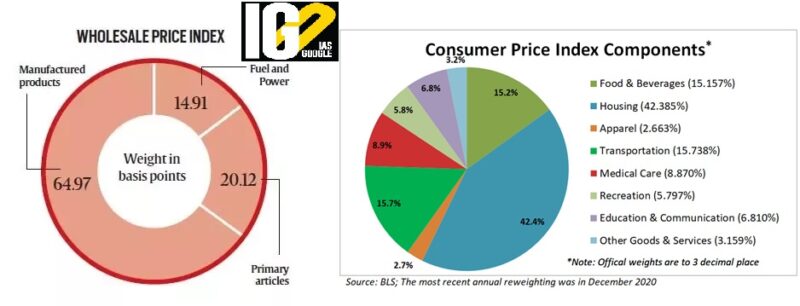
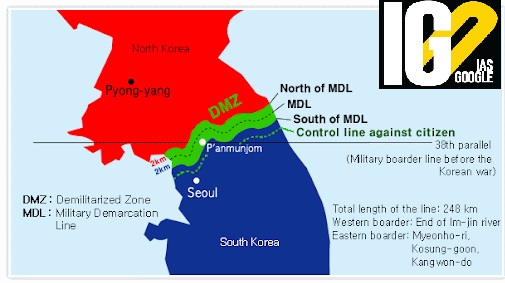 History:
History:

 Study was conducted by the Department of Science and Technology-Mahamana Center of Excellence in Climate Change Research, BHU.
Highlights:
Study was conducted by the Department of Science and Technology-Mahamana Center of Excellence in Climate Change Research, BHU.
Highlights:
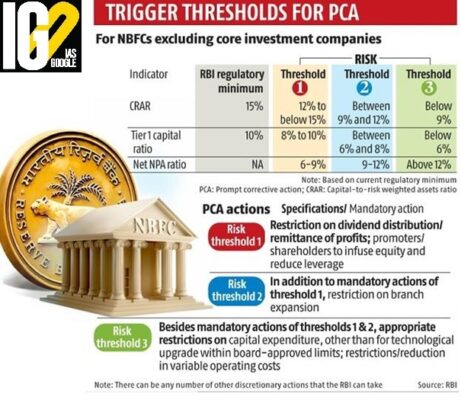

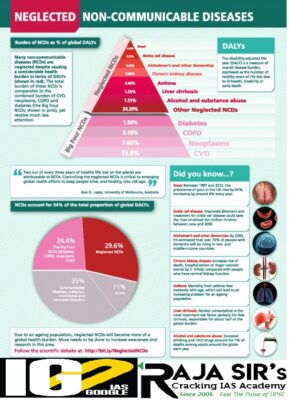
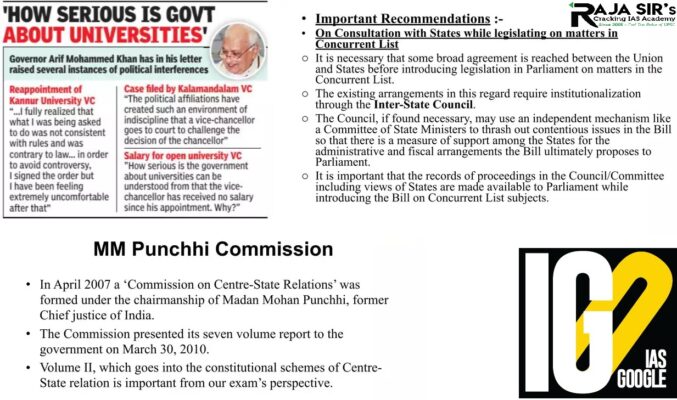
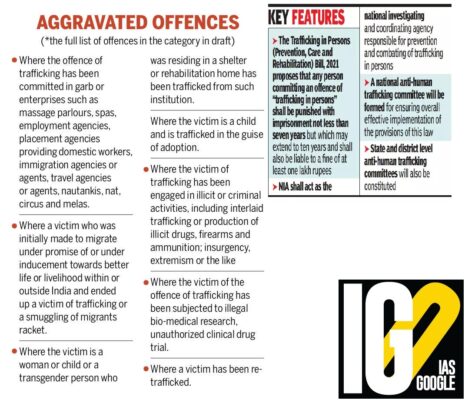
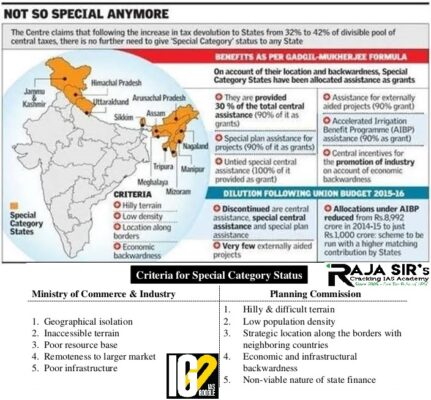
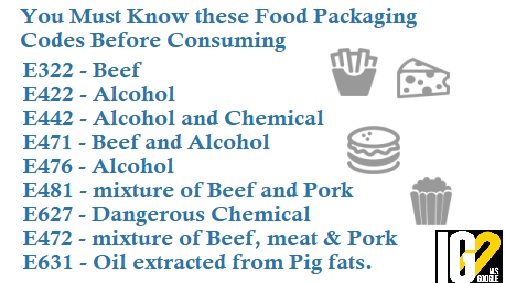 E631
E631

- It is an index that measures and tracks the changes in the price of goods in the stages before the retail level.
- This refers to goods that are sold in bulk and traded between entities or businesses.
- Publish by: Economic Advisor in the Ministry of Commerce and Industry.
- Base year:2011-12
- Primary articles: Food Articles and Non-Food Articles.
- Food Articles include items such as Cereals, Paddy, Wheat, Pulses, Vegetables, Fruits, Milk, Eggs, Meat & Fish, etc.
- Non-Food Articles include Oil Seeds, Minerals and Crude Petroleum
- Fuel & Power: tracks price movements in Petrol, Diesel and LPG
- Manufactured Goods: Textiles, Apparels, Paper, Chemicals, Plastic, Cement, Metals etc.
- It also include manufactured food products such as Sugar, Tobacco Products, Vegetable and Animal Oils, and Fats.
- It is an index measuring retail inflation in the economy by collecting the change in prices of most common goods and services.
- CPI is calculated for a fixed list of items including food, housing, apparel, transportation, electronics, medical care, education, etc.
- It is also a helpful pointer in understanding the real value of wages, salaries and pensions, the purchasing power of a country’s currency and regulating prices.
- CPI for Industrial Workers (IW)
- CPI for Agricultural Labourers (AL)
- CPI for Rural Labourers (RL) and
- CPI for Urban Non-Manual Employees (UNME).
- While the Ministry of Statistics and Program Implementation collects CPI (UNME) data and compiles it, the remaining three are collected by the Labour Bureau in the Ministry of Labour.
- Aim: To deliver financial services at a scale in the agribusiness sector in the state.
- The project intends to partner with select 8 to 12 sub-projects from the financial services sector benefitting 125,000 beneficiaries of which 30% will be women.
- The fund will support the testing and up scaling of innovations by financial service providers.
- The resolution was sponsored by Ireland and Niger, and it did not pass, with 12 UNSC members voting for it, India and Russia voting against it and China abstaining
- The decisions in UN Security Council could be taken without consensus or the involvement of most developing countries.
- Thus, it is not fair to decide on climate issues in UNSC, on which only few countries can decide on all climate-related issues.
- Developing and least developed countries had worked over the last two decades to make common but differentiated responsibilities, a fundamental tenet of climate action.
- Common but differentiated responsibilities CBDR): It says that all states are responsible for addressing global environmental destruction yet not equally responsible.
- Under CBDR, developed countries were supposed to provide $100 billion per year in climate finance for developing countries as a whole, by 2020.
- They had not met their promises with regard to climate action till now.
- India alone would need a trillion dollars by 2030 to achieve its climate ambitions.
- UNSC is one of the six main organs of the UN.
- The first session was held in 17 January 1946, London.
- Headquarters: New York, US.
- Aim: Maintaining international peace and security.
- It consists of 15 members; five permanent and 10 non-permanent members.
- The five permanent members are the US, UK, Russia, China and France.
- Every year five non-permanent members are elected for a tenure of two years.
- To maintain international peace and security.
- To develop friendly relations among nations.
- To cooperate in solving international problems and in promoting respect for human rights.
- To be a centre for harmonizing the actions of nations.
- The permanent members have a veto power.
- This allows any of the five countries to block the adoption of a resolution.
- However, they cannot end or prevent a debate through this power.
- The non-permanent members do not have veto power.
- However, they have collective right of veto, any resolution of the UNSC has to be passed by at least seven non-permanent members even if all the permanent members support it.
- Every member-country of the council including the non-permanent members, assumes the presidency of the council every month.
- The presidency is determined in an alphabetical order.
- Set forth principles for such an agreement
- Undertake investigation and mediation in some cases
- Dispatch a mission
- Appoint special envoys
- Request the Secretary-General to use his offices to achieve a pacific settlement of the dispute.
- Issue ceasefire directives that can help prevent an escalation of the conflict.
- Dispatch military observers or a peacekeeping force to help reduce tensions, separate opposing forces and establish a calm in which peaceful settlements may be sought.
- Economic sanctions, arms embargoes, financial penalties and restrictions, and travel bans.
- Severance of diplomatic relations.
- Blockade
- Collective military action.
 History:
History:
- The Korean peninsula was ruled by the Joseon Dynasty from 1392 to 1897.
- By signing the treaty of Shimonoseki,Japan formed the Korean Empire after defeating China in the Sino- Japanese war of 1895.
- Korea was effectively under the rule of the Japanese during the World War II and after the fall of Japan, Korean War started.
- The present-day Korean conflict is born primarily from the seeds sown during Cold War – between USSR and USA.
- Korea was occupied by the United States and the Soviet Union at the end of World War II.
- The United States proposed temporarily dividing the country along the 38th Parallel as a way to maintain its influence on the peninsula, which bordered Russia.
- In 1948, the American-backed, anti-communist southern administration declared itself the Republic of Korea.
- Soon after, the Soviet-backed, communist northern administration, based in Pyongyang, declared itself the Democratic People’s Republic of Korea.
- The war pitted South Korea and the United States, fighting under the auspices of the United Nations, against North Korea and China.
- The Soviet Union supported North Korea at the beginning of the war, giving it arms, tanks and strategic advice.
- But China soon emerged as its most important ally, sending soldiers to fight in Korea as a way to keep the conflict away from its border.
- Technically, the Korean War did not end.
- The fighting stopped when North Korea, China and the United States reached an armistice in 1953.
- But South Korea did not agree to the armistice, and no formal peace treaty was ever signed.
- Since 1953 there has been an uneasy coexistence between North and South Korea.

- Ministry of Environment and Forest & Climate change (MoEF&CC) has developed the National Bustard Recovery Plans.
- Objective-
- to check the dwindling numbers of the endangered Great Indian Bustard and Lesser Florican.
- to protect the habitat of the Great Indian Bustard (GIB).
- It is one of the heaviest flying birds in the world.
- It is the state bird of Rajasthan.
- Habitat-dry grasslands and scrublands on the Indian subcontinent
- Physical Features:
- Long legs and a long neck.
- Male and female are of same size.
- Male-
- Black feathers on the top of the head.
- whitish neck
- Brown wings highlighted by black and grey markings.
- Female-
- Smaller black crown on the top of the head.
- Food- grass seeds, insects, small rodents and reptiles.
- Protection Status:
- IUCN Red List: Critically Endangered
- CITES: Appendix I
- CMS: Appendix I
- Wildlife (Protection) Act, 1972: Schedule I
- Threats:
- Electrocution with power transmission lines.
- Irrigation and farming technology.
- Hunting and Poaching.
- Habitat Loss.
- Conservation Efforts:
- Project Great Indian Bustard-
- When- World Environment Day.
- Initiated by-Rajasthan Government
- Aim- To provide secure breeding enclosures in areas outside protected areas.
- Conservation breeding facility in Desert National Park
- Established by- Rajasthan government and Wildlife Institute of India (WII).
 Study was conducted by the Department of Science and Technology-Mahamana Center of Excellence in Climate Change Research, BHU.
Highlights:
Study was conducted by the Department of Science and Technology-Mahamana Center of Excellence in Climate Change Research, BHU.
Highlights:
- Climate change driven by anthropogenic activities is challenging the gains in public health.
- India, particularly, ranks high in the list of climate-vulnerable countries in the world.
- Globally, it is estimated that children are to bear most of the burden of disease due to climate change.
- The higher risk associated with children is due to the combination of physiological vulnerability as well as the risk of exposure.
- Climate parameters like temperature, humidity, rainfall, solar radiation, and wind speed were significantly associated with the infectious diseases.
- Disease like gastrointestinal diseases, respiratory diseases, vector-borne diseases, skin diseases in children are common.
- Climate parameters accounted for 9-18% of the total infectious disease cases.
- Non-climate parameters account for the rest.
- Upper respiratory tract infection (mostly cold and flu) and gastrointestinal infections (mainly diarrhea) constitute 78% of the disease burden.
- Due to socio-economic condition and modified climatic conditions, children are also suffering from stunting, wasting, and underweight conditions.
- It will come into effect on October 1 2022 on the basis of their financial position on or after March 31.

- It puts restrictions on para-banks when vital financial metrics dip below the prescribed threshold.
- It follows the scale-based regulations and revision in non-performing asset (NPA) norms brought in by the regulator for the sector.
- It gives power to the central bank to take any action irrespective of the size of an NON-Banking Financial Company (NBFC).
- The framework will apply to:
- all deposit-taking NBFCs.
- all non-deposit taking NBFCs in the middle, upper and top layers, including investment and credit firms, core investment firms, infrastructure debt funds, infrastructure finance firms and microfinance institutions.
- It has excluded NBFCs not accepting or not intending to accept public funds, primary dealers and housing finance firms, along with government-owned ones.
- Lenders showing deterioration in performance metrics like capital, asset quality, and leverage have to be restricted on paying dividends and opening branches.
- It brings NBFCs closely integrated with the banking system.
- It is a step taken by RBI to harmonise the regulatory framework between banks and NBFCs
- It ensures safer functioning of overall financial system
- NBFCs have been growing in size and have substantial inter-connectedness with other segments of the financial system.
- Prompt Corrective Action (PCA) Framework is a set of guidelines for banks that are weak in terms of identified indicators including:
- poor asset quality
- insufficient capital
- insufficient profit or losses.
- It is initiated by Reserve Bank of India in 2002 to discipline banks when they report poor and risky financial performance.
- It acts as a tool for effective market discipline.
- Objectives:
- To enable supervisory intervention at the appropriate time
- To initiate and implement remedial measures in a timely manner, so as to restore its financial health.
- PCA mentions three risk thresholds and three yardsticks of measurement.
- A breach of any criterion triggers PCA action.
- There will be three risk thresholds:
- The first risk threshold of the PCA will be triggered when the capital adequacy ratio of the NBFC falls below the regulatory minimum of 15 per cent.
- The second risk threshold will be triggered, if the ratio falls below 12 per cent.
- The third will be triggered when the ratio falling below 9 per cent.
- The three yardsticks to measure them are:
- capital adequacy ratio
- tier-1 capital ratio
- net NPA ratio
- The restrictions against an NBFC get progressively tightened as it breaches higher threshold levels.
- The NBFC will face restrictions on dividend distribution and
- The promoters will be asked to infuse capital and reduce leverage.
- On risk threshold 2: the NBFC will be prohibited from opening branches, while
- on risk threshold 3: capital expenditure will be stopped other than for a technological upgrade.
- The collegium has recommended 68 names for appointment in total across 12 high courts.

- The Supreme Court currently has the highest number of women judges.
- Out of the sanctioned strength of 34 judges, the Supreme Court has four women judges.
- Out of 677 sitting judges in both the Supreme Court and high courts, only 81 are women.
- This makes the representation of women judges in the total working strength to 12%.
- Among the 25 high courts, only Madras high court has women judges in double digits.
- Out of the working strength of 58 judges, the Madras HC has 13 women, which is more than 22% representation.
- High courts of Manipur, Meghalaya, Bihar, Tripura and Uttarakhand do not have even a single woman judge.
- The sanctioned strength of judges across 25 high courts in India is 1,098.
- 465 posts were vacant as of September 1.
- Women judges enhance the legitimacy of courts.
- They contribute far more to justice than improving its appearance: they also contribute significantly to the quality of decision-making.
- They bring those lived experiences to their judicial actions, that tend toward a more comprehensive and empathetic perspective.
- Adjudication is enhanced by preventing ill-considered or improper decisions, by elucidating how laws and rulings can be based on gender stereotypes etc.
- There is need to change the patriarchal mindsets of Indian society.
- There is need to promote gender-neutral parenting so that future generations free themselves from the bonds of patriarchy.
- There is a need for the reformation of the judicial selection procedure and ensure fair representation of women in the Indian Judiciary.
- A more diverse judiciary would increase public confidence and instil greater support from its citizens.
- There must be a minimum 33% reservation quota for women in the judiciary.
- It will ensure equal representation of women and also provide a fair opportunity to reach higher levels in the profession.

- Non-communicable diseases (NCD) are collectively responsible for the death of 41 million people each year.
- 85 per cent of the global premature deaths (between age 30–69) from NCDs occur in low-and middle-income countries.
- In sub-Saharan Africa, NCDs will be the leading cause of death by 2030.
- It shows that investing $0.84 per person per year could save seven million lives
- It is possible if low and lower middle-income countries make an additional investment in the prevention and treatment of noncommunicable diseases (NCDs).
- It reveals the financing needs and returns on investment of WHO’s “best buy” policies to protect people from noncommunicable diseases (NCDs),
- Best Buy policies also offers protection against the impacts of the pandemic.
- The cost-effective “best buy” interventions include:
- Increasing health taxes such as increasing taxes on tobacco and alcohol.
- Healthy diet instructions such as reducing salt intake through the reformulation of food products.
- Restrictions on marketing and sale of harmful products.
- Information and education policies such as, administering drug therapy and counselling for people who have had a heart attack or stroke.
- Vaccination policies including vaccinating girls aged 9─13 years against human papillomavirus and screening women aged 30─49 years for cervical cancer.
- Actions connected to managing metabolic risk factors, such as hypertension and diabetes, in order to prevent complications.
- These interventions can make the world achieve Sustainable Development Goal 3.4to reduce premature death from NCDs by one-third by 2030.
- Noncommunicable diseases (NCDs), are chronic diseases of long duration.
- NCDs are medical conditions but are not caused by infectious agents.
- They are the result of a combination of genetic, physiological, environmental and behavioural factors.
- The main types of NCD are:
- Cardiovascular diseases (such as heart attacks and stroke)
- Cancers
- Chronic respiratory diseases (such as chronic obstructive pulmonary disease and asthma)
- It most commonly affects people in low- and middle-income countries where more than three quarters of global NCD deaths occur.
- People of all age groups, regions and countries are affected by NCDs.
- Modifiable behavioural risk factors:
- Modifiable behaviours, such as tobacco use, physical inactivity, unhealthy diet and the harmful use of alcohol, all increase the risk of NCDs.
- Metabolic risk factors
- Metabolic risk factors contribute to four key metabolic changes that increase the risk of NCDs:
- raised blood pressure
- overweight/obesity
- hyperglycemia (high blood glucose levels)
- hyperlipidemia (high levels of fat in the blood).
- Metabolic risk factors contribute to four key metabolic changes that increase the risk of NCDs:

- The Governor of the state is the ex-officio chancellor of the universities in that state.
- The Governor’s powers and functions as the Chancellor are laid out in the statutes that govern the universities under a particular state government.
- The Governor, as the Chancellor, presides over the university convocation and also appoints the Vice-Chancellor (VC).
- Whether the governor has an absolute discretion over the choice of VC, depends on the statute of the individual state concerned.
- The President of India shall be the Visitor of a central university.
- His role is limited to presiding over convocations.
- He has the right to authorise inspections of academic and non-academic aspects of the universities and also to institute inquiries.
- Chancellors in central universities are titular heads, who are appointed by the President in his capacity as Visitor.
- The Vice Chancellors too are appointed by the Visitor from panels of names picked by search and selection committees formed by the Union government.
- The Punchhi Commission on Centre-State Relations in its report published in March 2010 recommended removing Governors from the post of Chancellor of state universities.

- The bill addresses certain loopholes and hitherto missed aspects very of the previous Bill's provisions effectively and comprehensively.
- Applicability: the law will apply to all citizens of India, within and outside the country.
- Investigation agency: Cases will be probed by NIA (National Investigation Agency). The faster arrest of offenders (most often operating in syndicates and organised criminal groups).
- Penalty: Stricter punishment to the perpetrator if the victim of trafficking is a child. Aggravated crime to get deservedly stricter punishment.
- Bill includes a provision that says that physical movement or transportation of the victim is not necessary to define the crime of tracking.
- Has the provision of protection homes for immediate protection of victims and rehabilitation homes for long term rehabilitation.
- This will help the victims to come out of the trauma and seamlessly assimilate into society later.
- Proposes a proposal for the provision of separate protection and rehabilitation homes for transgenders.
- The rehabilitation is to begin immediately once the FIR is registered.
- Provides immediate relief to the victim within 30 days of the filing of FIR.
- The compensation will be awarded to the victim under the State Victim Compensation Scheme.
- The Proceeds of crime collected and accumulated by traffickers will be used for the relief and rehabilitation of the victim.
- Bill makes re-tracking an aggravated form of tracking with higher punishment of not less than 10 years which can go up to life imprisonment and a fine which can be up to Rs 10 lakh.
- Women, children and physically and mentally disabled persons are given extra protection in the law by including them under the provision of “presumption of offences”.

- Special Category Status (SCS)is a classification given by the Central government to assist in the development of those states that face geographical and socio-economic disadvantages.
- Such as hilly terrains, strategic international borders, economic and infrastructural backwardness, and non-viable state finances.
- The decision to grant special category status lies with the National Development Council.
- It is composed of the prime minister, union ministers, chief ministers and members of the planning commission, who guide and review the work of the commission.
- Hilly and difficult terrain
- Low population density or sizeable share of tribal population
- Strategic location along borders with neighbouring countries
- Economic and infrastructural backwardness
- Non-viable nature of state finances
- In the present scenario, no more states can be given the status of a special category state.
- The Constitution of India does not include any provision for the categorization of any state in India as a 'special category state.
- A wide range of provisions is available to as many as 10 states that have been listed under Articles 371, 371-A to 371-H, and 371-J.
- The central government bears 90 percent of the state expenditure on all centrally-sponsored schemes.
- Concession on excise duty to attract industries to the state.
- 30 percent of the Centre's gross budget also goes to special category states.
- The states can avail the benefit of debt-swapping and debt relief schemes.
- States with special category status are exempted from customs duty, corporate tax, income tax and other taxes to attract investment.
- Special category states have the facility that if they have unspent money in a financial year, then it does not lapse and gets carried forward for the next financial year.
 E631
E631
- It is known as disodium inosinate.
- It is the disodium salt of inosinic acid.
- It is used as a food additive and often found in instant noodles, potato chips, and a variety of other snacks.
- As a relatively expensive product, disodium inosinate is usually not used independently of glutamic acid.
- Disodium inosinate is generally produced from meat, including chicken.
- It also may be produced from tapioca starch without any animal products involved in the production.
- In some cases it can be labeled as "vegetarian" in ingredients lists when produced from plant sources.









 Latest News
Latest News
 General Studies
General Studies